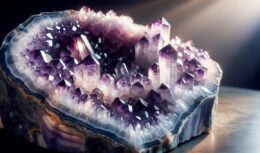
The company Hypersonix plans to build a hydrogen engine focused on hypersonic planes. The engine will be able to fly over at a speed greater than Mach 5
Hypersonix, an Australian company focused on building engines for hypersonic aircraft, has announced that it has found the “perfect” material for its Spartan hydrogen engine. The company will use Ceramic Matrix Composites (CMC) for the production of the propellant. The Spartan engine will be capable of accelerating the Delta-Velos hypersonic plane above Mach 5 speed.
Read also
Hydrogen engine will withstand high temperatures
For a flight to be considered hypersonic, it needs to reach or exceed Mach 5 speed, around 6 km/h. Hypersonix CTO Michael Smart comments that Scramjet engines rely on the combustion of oxygen in the air and a fuel to produce thrust.
According to the executive, the Spartan green hydrogen engine, using CMC, will withstand the high temperatures that hypersonic aircraft need to face. Still according to Smart, the high temperature charge lasts about 20 minutes per Flight and, for reuse, at least 30 cycles would be enough. CMCs feature a high strength-to-weight ratio even at high temperature, durability and high resistance to thermal shock.
Hypersonix wants to provide sustainable hypersonic engines

Although the hydrogen engine is a concept created for the company's hypersonic aircraft, called Delta-Velos, Hypersonix is a company focused on engine manufacturing.
The Australian company has been creating partnerships with universities, BOC, Boeing, a supplier of hydrogen and also Siemens, which will supply the computational simulation systems for fluid dynamics. The director points out that his company's goal is to deliver sustainable engines for hypersonic aircraft throughout the world market.
The company's key expertise is in scram jet engines and how to develop sustainable hypersonic aircraft. Hypersonix is actively pursuing research and development as well as high temperature strength and durability for multipurpose launch vehicles, engines and their components.
Hypersonic aircraft market advances in Brazil
In addition to the company, which plans to create a hydrogen engine for this type of aircraft, the Brazilian Air Force managed at the end of last year to reach incredible speeds at the Alcântara Launch Center, in Maranhão. Called 14-XS, the FAB scramjet engines manage to generate a power of 5 hp and reach a speed very close to Mach 6 in the very first test flight of the project.
The speed achieved by the 14-XS is only part of the potential of scramjet engines. According to the air force, the technology system under development in Brazil will be able to reach Mach10.
The engines do not have moving parts, such as turbines, compressors, among others, and also extinguish the use of ignition. Such thrusters with hypersonic technology will be able to propel space planes, which will have the ability to travel to space and back, something that was done by NASA's Space Shuttles before, however with much lower costs. This type of propulsion could also be used in commercial hypersonic aircraft.
However, so far this technology is emerging in hypersonic cruise missiles, a form of weapon that is expected to totally transform defense doctrines in the future.










(These cables not only support the receivers…
...if the plates work...
Good news
And what would be the disadvantages in relation to…
I have had a Corolla Cross since Dec/2021. Technologically…
The discovery of this new ore world in…
Congratulations, but I don't want to......
But of course I would buy it! Without any…